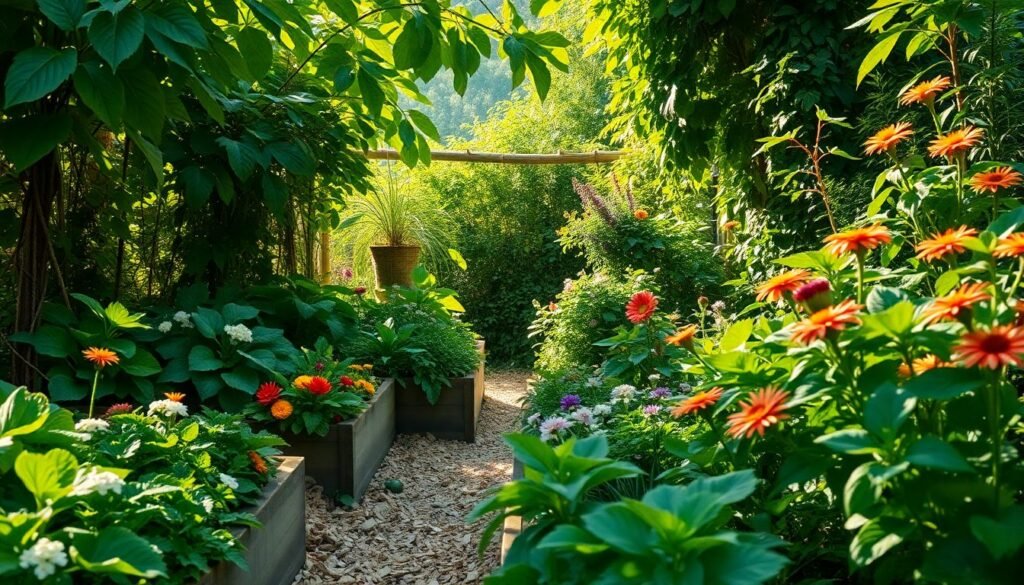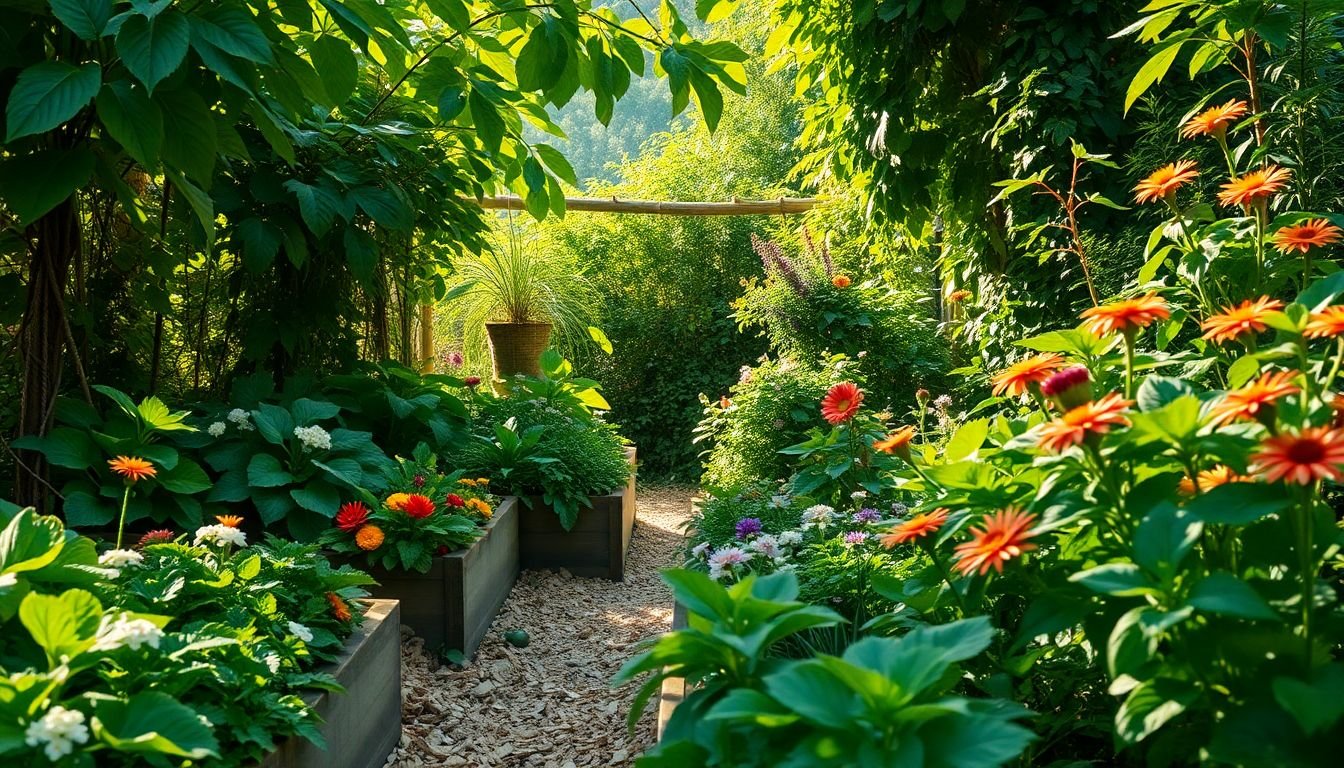
A sustainable garden not only benefits the environment but also creates a low-maintenance and thriving space that can support local wildlife. Whether you’re starting from scratch or looking to make your existing garden more eco-friendly, there are a variety of techniques that can help you create a sustainable oasis. In this guide, we’ll cover essential practices for building and maintaining a garden that is both productive and kind to the planet.
It encourages practices that are gentle on the planet, helping to conserve resources while growing food, flowers, and habitats for wildlife. Through this method, gardeners can cultivate an ecosystem that thrives and remains productive year after year.
This post will explore key aspects of creating a sustainable garden, including water conservation, soil health, pest management, fostering biodiversity, and sustainable practices.
Sustainable Gardening Practices for a Greener Future
To achieve sustainability in your garden, it’s important to adopt eco-friendly practices that work in harmony with nature. Here are some key techniques to help you get started.
Composting: Recycle and Revitalize
Composting is one of the best ways to reduce waste and enrich your garden soil. By composting kitchen scraps, yard trimmings, and other organic materials, you create nutrient-rich compost that improves soil structure, boosts plant growth, and reduces the need for chemical fertilizers. Composting also helps divert waste from landfills, making it a sustainable practice that benefits the environment.
Water Conservation: Efficient Irrigation Systems
Water is one of the most precious resources in gardening. To make your garden sustainable, consider installing a rainwater harvesting system or using drip irrigation. These methods deliver water directly to the roots, reducing water wastage. Additionally, mulching helps retain moisture in the soil, reducing the need for frequent watering and keeping your garden hydrated with minimal effort.
Native Plants: Grow What Belongs
Native plants are adapted to your region’s climate and require less water, fertilizer, and pesticides than non-native species. They also support local wildlife, such as birds, bees, and butterflies, by providing food and shelter. By choosing native plants for your garden, you help preserve biodiversity and reduce the ecological footprint of your gardening practices.
Soil Health: Foundation of a Sustainable Garden
A healthy garden starts with healthy soil. By focusing on soil health, you can reduce the need for chemical interventions and create a more resilient ecosystem in your garden.
Organic Fertilizers: Feed the Soil, Not the Plants
In sustainable gardening, organic fertilizers are preferred over synthetic ones. Compost, manure, and organic mulches help enrich the soil with essential nutrients and promote beneficial microorganisms. These natural amendments not only feed your plants but also build healthy, living soil that can retain moisture and improve plant resilience.
No-Till Gardening: Preserve Soil Integrity
Tilling can damage soil microorganisms and lead to erosion, so adopting no-till or low-till practices helps preserve soil health. Instead of tilling, use techniques like mulching and adding organic matter to the soil to encourage long-term soil fertility.
Biodiversity: Promote Balance in Your Garden Ecosystem
Biodiversity is an essential element of a sustainable garden. A diverse ecosystem helps control pests, supports pollinators, and ensures that your garden remains resilient to climate fluctuations.
Companion Planting: Natural Pest Control
Companion planting involves growing different plants together that support each other in terms of growth, pest control, and nutrient requirements. For example, planting basil near tomatoes can deter pests like mosquitoes and aphids. This natural method reduces the need for chemical pesticides and fosters a more balanced, self-sustaining garden.
Encourage Pollinators: Attract Bees and Butterflies
Pollinators like bees, butterflies, and hummingbirds are essential for fruit and vegetable production. You can encourage these important creatures by planting nectar-rich flowers and shrubs. Additionally, creating shelter with bee houses, butterfly bushes, or small water sources will provide a safe environment for pollinators to thrive.
Eco-Friendly Garden Design: Plan for Sustainability
A well-planned garden is a sustainable garden. Thoughtful design can optimize space, reduce waste, and create a harmonious environment.
Xeriscaping: Low-Water Landscaping
Xeriscaping is a landscaping method that focuses on drought-tolerant plants and water-efficient techniques. By using native and drought-resistant plants, you can create a beautiful garden that requires less water while maintaining aesthetic appeal. Incorporating features like rocks, mulch, and gravel helps retain moisture and reduce the need for irrigation.
Vertical Gardening: Maximize Space
Vertical gardening is an excellent solution for small or urban spaces. By growing plants on trellises, walls, or other vertical surfaces, you can maximize limited space while reducing the need for expansive lawns. Vertical gardens are perfect for growing climbing plants like tomatoes, cucumbers, or beans, as well as decorative flowers and herbs.
Waste Reduction: Minimize Your Garden’s Impact
A truly sustainable garden aims to reduce waste and use resources efficiently. Below are simple ways to minimize your garden’s environmental footprint.
Recycled Materials: Up cycle in the Garden
Use recycled or repurposed materials for garden structures like raised beds, fences, or planters. Pallets, old tires, and even broken pots can be transformed into functional, stylish garden elements. This reduces the need for new materials and helps keep waste out of landfills.
Plant Waste Management: Reduce, Reuse, Recycle managing garden
Managing garden waste is crucial for sustainability. Instead of throwing away plant clippings or lawn trimmings, consider using them as mulch or compost. You can also feed plant trimmings to animals or use them for creating natural barriers or pathways in your garden.
Conclusion: Achieving a Thriving, Sustainable Garden
Creating a sustainable garden takes time, effort, and planning, but the rewards are well worth it. By embracing practices like composting, water conservation, and native planting, you can reduce your environmental impact while cultivating a garden that’s both beautiful and productive. Sustainable gardening not only helps preserve natural resources but also fosters biodiversity and supports local ecosystems. Whether you’re a seasoned gardener or a beginner, adopting these eco-friendly practices will help ensure that your garden thrives for years to come.
